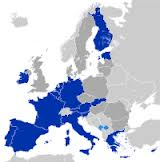 To the bewilderment of many, economists ignore food and energy prices when considering inflation. Here’s why. Two years ago soybeans were $17.94/bushel because a drought sent prices to all-time highs. Today, due to outstanding weather, front-month soybeans are at $9.90/bushel. Similarly, today gasoline is 20% cheaper than in June! These volatile prices tell us about weather conditions and possible supply disruptions, neither of which give insight into future inflation trends.
To the bewilderment of many, economists ignore food and energy prices when considering inflation. Here’s why. Two years ago soybeans were $17.94/bushel because a drought sent prices to all-time highs. Today, due to outstanding weather, front-month soybeans are at $9.90/bushel. Similarly, today gasoline is 20% cheaper than in June! These volatile prices tell us about weather conditions and possible supply disruptions, neither of which give insight into future inflation trends.
Tag Archives: Inflation
Insignificant Inflation
 With the Fed’s preferred inflation gauge currently running at 1.6% year-over-year, well below the Fed’s 2% long-run target, real personal income growth flat, real household spending declining by 0.1% in July, and inflation in Europe at a staggeringly low 0.3% year-over-year and falling, don’t waste your energy getting worked–up about inflation. Moreover, GDP growth in Q3 will be 2.75%, too low to generate meaningfully more inflationary pressures.
With the Fed’s preferred inflation gauge currently running at 1.6% year-over-year, well below the Fed’s 2% long-run target, real personal income growth flat, real household spending declining by 0.1% in July, and inflation in Europe at a staggeringly low 0.3% year-over-year and falling, don’t waste your energy getting worked–up about inflation. Moreover, GDP growth in Q3 will be 2.75%, too low to generate meaningfully more inflationary pressures.
Insignificant Inflation
 Despite fears of inflation, it’s currently benign no matter how measured. The CPI is up 2.1% year-over-year while the core CPI (which removes food and energy) is up just 1.9%. The PCE, the Fed’s preferred inflation measure, is up 1.6% Y-o-Y with the core up 1.5%. Economy wide inflation is at 1.6% Y-o-Y, and average hourly earnings are up 2% over the past year. Short term rates aren’t rising soon.
Despite fears of inflation, it’s currently benign no matter how measured. The CPI is up 2.1% year-over-year while the core CPI (which removes food and energy) is up just 1.9%. The PCE, the Fed’s preferred inflation measure, is up 1.6% Y-o-Y with the core up 1.5%. Economy wide inflation is at 1.6% Y-o-Y, and average hourly earnings are up 2% over the past year. Short term rates aren’t rising soon.
Monetary Matters
 While the Fed has been right to keep rates low because inflation has been totally benign for years, that doesn’t mean they will start raising rates at the right moment. They would much prefer to raise rates late and be forced to tamp down some inflation than to raise rates too early and weaken the economy. They can fix the former, the latter would be a much bigger problem.
While the Fed has been right to keep rates low because inflation has been totally benign for years, that doesn’t mean they will start raising rates at the right moment. They would much prefer to raise rates late and be forced to tamp down some inflation than to raise rates too early and weaken the economy. They can fix the former, the latter would be a much bigger problem.
Declining Dollars
While raising the minimum wage to $10.10 from the current $7.25 is estimated to eliminate 500,000 jobs and raise 900,000 workers out of poverty, that’s not the end of the story. Those numbers will steadily decline as inflation eats away at the value of the minimum wage increase. Assuming inflation of 2%/year, by 2021 the lost jobs will number 300,000 and those no longer in poverty will number just 540,000.
One Currency, No Leaders
The virtue of the gold standard was that countries with trade surpluses saw their gold holdings rise, which increased their money supply, raised prices and reduced exports. Conversely, countries that ran deficits lost gold, which caused their money supply to decline, pushing prices down and boosting exports. Today, euro-using Germany runs chronic surpluses, yet won’t tolerate the necessary inflation, making recovery for the euro-using Club-Med countries unnecessarily difficult.
Disappearing Inflation
Adding to the low inflation environment we’re in, is Japan’s central-bank bond buying. By reducing the value of the Yen by about 20% in just a few months, it has made buying Japanese cars and other Japanese goods cheaper. And that puts downward pressure on prices of substitute goods. For example, to hold domestic market share, US automakers must minimize price increases by keeping wage growth low and strong-arming suppliers.
Strong Week
Retail sales jumped a strong 0.4%, even after subtracting high gas prices, higher building material prices, and autos and groceries. Industrial production was up and is nearing its pre-recession peak and the four-week moving average of initial weekly unemployment claims is at its lowest level in five years. Inflation continues to be benign. The only negative — a dip in consumer sentiment — but remember nothing is perfect.
Euro Risk
Despite the euro zone being in recession, the euro is dramatically rising against the US dollar, from $1.20/euro in July to $1.36 today. Why, because massive European Central Bank (ECB) action prevented Spain from collapsing, and the ECB is fast becoming an inflation hawk and has thus started to shrink its balance sheet, until, of course, the southern European countries go into recession and the ECB again loosens monetary policy.
Monetary Slow Down
While the Fed has increased the money supply by $2 trillion and will increase it by another $1 trillion by 1/1/14, inflation is MIA. This is because the velocity of money, or the number of times a dollar changes hands before it is saved, has collapsed. Before the Great Recession, M1 (cash) velocity was 10.5, now it’s 6.5 and M2 (cash and checking accounts) velocity was 2, it’s now 1.5.





